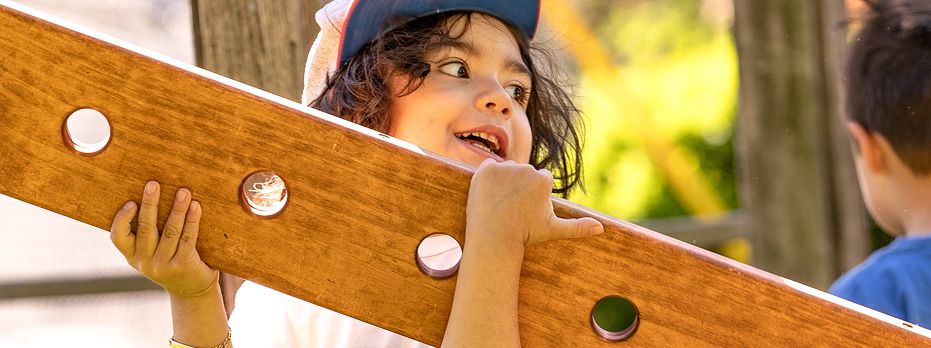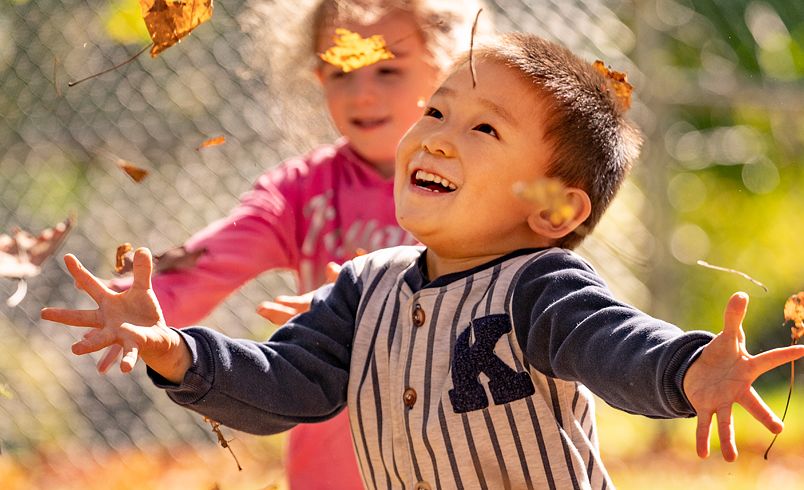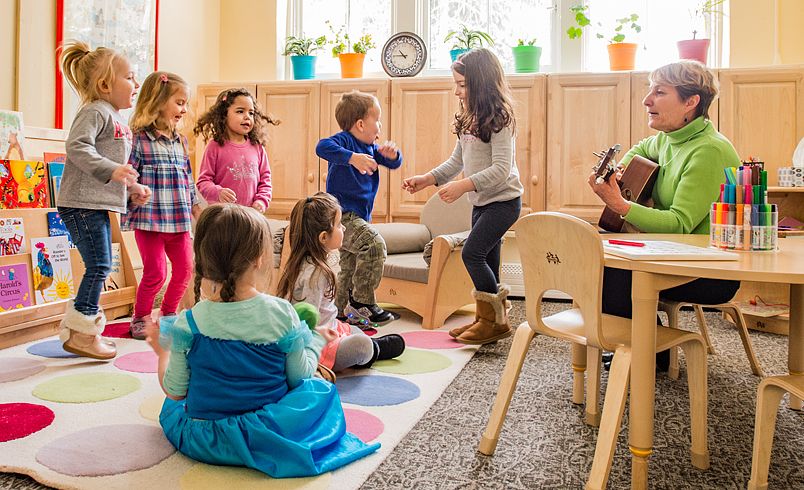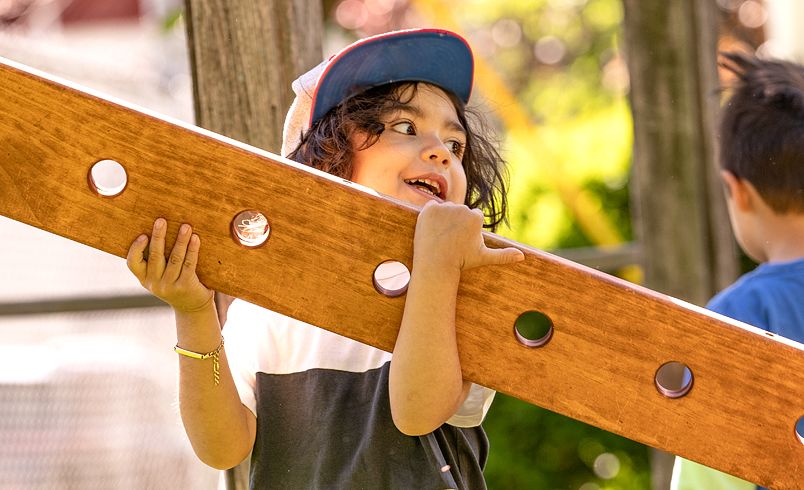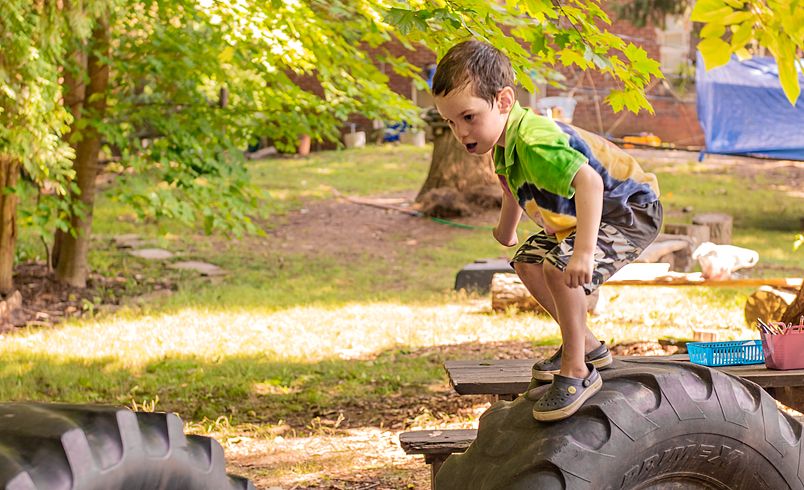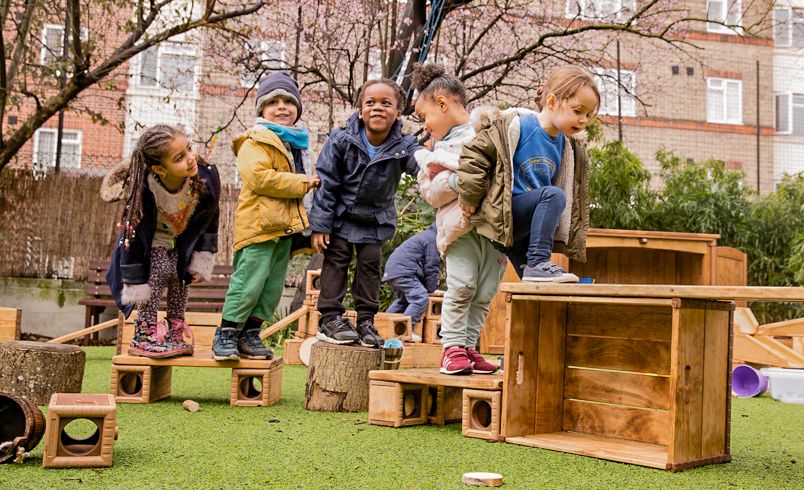How Do We Build Successful Kids?
Play hard. Move lots. Learn more.
| March 2020When we think of traditional education, we think of the three R’s: reading, writing and arithmetic. With this approach, the goal of preschool is to hammer home letter recognition, pencil mechanics, and counting to get ready for sight words, spelling, addition, and subtraction.
But veteran teachers confide that over the past 20 years there has been a marked rise in behavior challenges, along with diagnoses of learning disabilities and attention deficits. Children arrive at school with less ability to focus and attend, and more trouble with self-control. Without these foundational skills of focus and self-control, academic learning is even more difficult. So, do we need to just crack down on those wiggly kids and tell them to sit still and pay attention? No. Instead, we need to step back and find the reason for this change and address it. The reason lies in those wiggly little bodies.
We tend to think that the body’s sole job is to carry around our brains which do the fancy thinking for us. But the truth is, young children need to use their bodies to learn. They use their bodies to build neural pathways in their brains, laying the groundwork for complex, creative, and critical thought. Fundamentally, children need to be physically literate in order to be academically literate.
The Aspen Institute defines physical literacy as the “ability, confidence and desire to be physically active for life” (Schepper 2015) Just like learning to read, write, and count, physical literacy takes practice. Humans acquire fundamental locomotor movement patterns in early childhood. The more we use those skills, the more confidence we gain in them. As we develop confidence, we push the envelope, mastering new skills and building the desire to move even more. For children, this desire to move is integral to the development of the brain and ultimately the ability to learn. If young children are not physically literate, they cannot move their bodies the way they were designed to move, so they can’t use their bodies appropriately to learn. Just like academic illiteracy, physical illiteracy has far-reaching implications.
So, back to those self-control and attention challenges teachers are seeing in the classroom. If these issues are rooted in physical illiteracy, why are they on the rise? I would argue that this comes from a decrease in children’s physical activity. Children are more sedentary today than ever before. Studies have found preschoolers watch an average 4.5 hours of TV a day (Yogman 2018) while elementary school children spend almost 8 hours a day in front of a screen of some kind (Welch 2018). In a worldwide study of children’s fitness levels, the British Journal of Sports Medicine ranked US children 47th out of 50 countries (Lang 2018).
The sedentary nature of our children has obvious implications for their physical health, but the concerns go beyond physical health. The lack of physical activity has real implications for the growth and development of a wide array of critical, foundational skills, impacting children in the classroom—even in preschool. Simply put, without physical activity, our children are starting out behind across their entire development—physical, mental, emotional, and academic.
A recent study from Finland reported that the more time first grade boys spend in sedentary activities, the poorer their reading skills were over the next two years when the real foundation for reading takes place. Those same sedentary first grade boys also had poorer performance in math skills (Finland 2016).
Too often, adults tend to think that more time in the classroom will mean more learning. In fact, the opposite may well be true. A high school in Naperville, Illinois, established a Learning Readiness PE program (2013). This program gave struggling students an aerobic-based PE class in the period prior to their language arts class. As a result, their reading scores went up 50% in just one semester. Wow.
The connection between physical movement and academic performance is clear. So, what do we do to help our children? We get them moving—a lot. Whenever possible, we send them outside with buckets and shovels, planks and bricks, swings and slides, friends and imagination and we let them play. Beyond that, we get them moving purposefully to build the skills they will need to be successful in school and in life.
At Pop, Hop & Rock™ we have developed a Key Skills and Strengths system for evaluating the developmental heft of activities. These Key Skills and Strengths are the foundational skills that young children need for their physical literacy AND their classroom success. Focusing on these skills and strengths allows us to be intentional in designing physical activities that are both fun and skill-building.
Key Skills and Strengths are divided into four categories, with each category contributing to physical literacy and, ultimately, to school success.
Perceptual Motor Skills
Our perceptual motor skills help us figure out where we are in space and how we move through it. We develop these skills by moving through space, feeding that spatial information to our brains. The brain understands what under means when the body plays limbo. The brain understands what close means when the body crawls through a tight tunnel. The brain understands what still means when we stop quickly after running. Later, we use under to hook letter j under the line. We use close when understanding that a 1 and a 2 close together mean 12. And we use still when waiting in line.
We also learn patterning and sequencing through our bodies. Galloping, climbing, dancing, and jumping jacks all teach the patterning and sequencing we need to understand the rhythm of language and math.
Sensory Skills
Our sensory skills help us process the information coming into the body and brain through our senses, including the lesser known vestibular and proprioceptive senses. These senses help us with our body’s position in the world, the amount of force we use to manipulate our bodies and the management of information our brains take in each day. We develop these skills by practicing the information these senses give us. We learn about body position by changing it—up, down, side to side—giving the brain plenty of chances to learn how that feels. We learn about force by using it in different ways—tagging a friend gently or pushing a log with all our might. We learn to process visual information by watching the world whiz by when we run, and we learn to process auditory information by listening and following obstacle course directions.
All of these sensory skills work together so we can attend, focus, and behave in school. They help the brain sort information to keep us from becoming overwhelmed. They help us hold our heads and upper bodies up so we can sit at a desk, hold a book, or write.
Physical Strengths
Our physical strength gives the various parts of our bodies the ability to do physical work. As with the other skills, we build physical strength by using our core, hands, upper body, and lower body with increasing intensity. Then, we will have the gross and fine motor strength to sit up straight, using pencils and scissors effectively. We also build our aerobic strength by lots and lots of movement, moving oxygen-filled blood through our bodies and brains. The flooding of oxygen through the brain helps build those important neural connections needed for higher-level thinking.
Other Skills
Important skills that don’t fit in the other categories include crossing the midline, eye-hand coordination, bilateral movement, motor planning, and balance. We build these skills by using the body in increasingly challenging ways. Start with a wide, low balance beam to lay the foundation for balance, and advance to higher, narrower beams and complex yoga poses. Build motor planning skills by starting with carrying a ball across an even surface, and then try it with obstacles in the path. As with the other categories, the doing is what achieves the skill-building. And, then these skills will help with the coordination needed to cut a curved shape, stay upright in line, and navigate a crowded cafeteria.
If we adults reach back into our own memories of childhood, we will see how we built these skills: hours spent in outside play building forts, climbing trees, and doing heavy chores for our families. And when we compare those active memories to the typical play children experience now, we see the gross difference between the two. That is the gap we must bridge.
If we truly want children to find success socially, emotionally, behaviorally, and cognitively, we need to put lots and lots of big body physical play back into their day. Children cannot learn these kinds of skills from a worksheet, flashcards, app, or computer game. This kind of play is the single most important tool to support their development and long term success. If we give them this tool again, we will see an improved ability to attend, focus, behave, and LEARN.
References:
Lang JJ, Tremblay MS, Léger L, Olds T, Tomkinson GR..2018. “International variability in 20 m shuttle run performance in children and youth: who are the fittest from a 50-country comparison? A systematic literature review with pooling of aggregate results”.Br J Sports Med. 2018 Feb;52(4):276. doi: 10.1136/bjsports-2016-096224. Epub 2016 Sep 20. Review. PMID:https://www.ncbi.nlm.nih.gov/pubmed/27650256Schepper, Robin. 2015. Guest Blog March 9, "What Do You Do? Physical Literacy In Action" https://www.aspeninstitute.org/blog-posts/what-do-you-do-physical-literacy-action/
University of Eastern Finland. 2016. “Sedentary lifestyle may impair academic performance in boys” 30 November 2016. https://www.eurekalert.org/pub_releases/2016-11/uoef-slm113016.php
Welch, Ashley. 2018. “Health experts say parents need to drastically cut kids' screen time” CBS News. August 6. 2018. https://www.cbsnews.com/news/parents-need-to-drastically-cut-kids-screen-time-devices-american-heart-association/
Yogman, Michael, MD, FAAP,a Andrew Garner, MD, PhD, FAAP,b Jeffrey Hutchinson, MD, FAAP,c Kathy Hirsh-Pasek, PhD,d Roberta Michnick Golinkoff, PhD,e. 2018. “The Power of Play: A Pediatric Role in Enhancing Development in Young Children” Pediatrics Volume 142, number 3, September 2018 https://kathyhirshpasek.com/wp-content/uploads/sites/9/2019/06/Yogmanetal2018.pdf
Zientarski, P. 2013. “Learning Readiness P.E.” Naperville Central High School. Sept 2013. http://iphionline.org/pdf/P.E._Case_Study_Naperville.pdf

